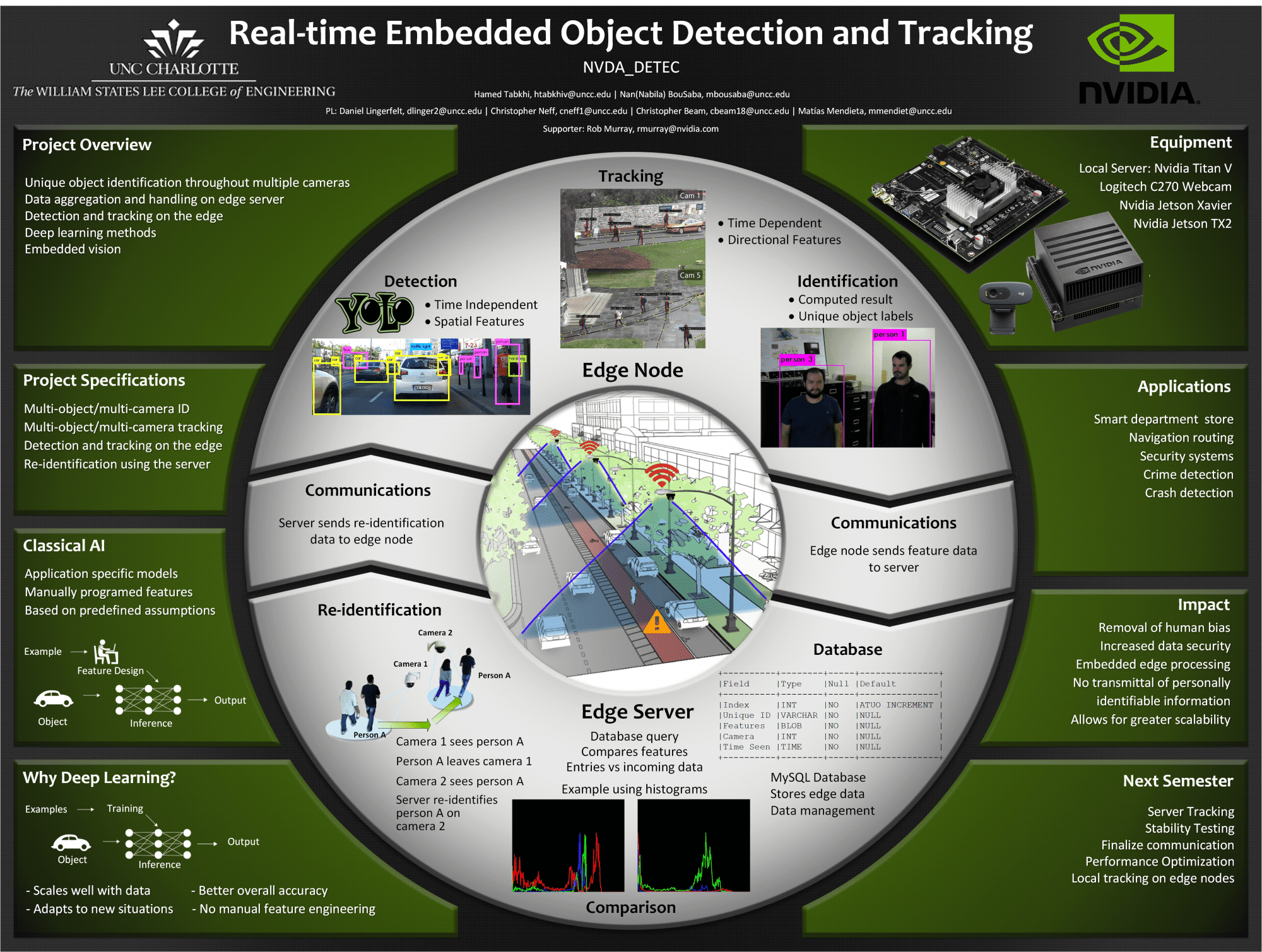Technology
What problem is SmartSafe StreetScapes trying to solve?
Police departments across the country are facing an increased demand for intelligent policing. A combination of factors make this a challenge: Rapid growth in urban areas; civic budget restrictions; strained community-police relationships; increased social activism and the use of social media as a mass information tool. As a result, modern policing is at a crossroads. SmartSafe StreetScapes will bring law enforcement and communities together to design a technology solution that will offer wide data collection opportunities that maintain citizen privacy and, ultimately, lead to reduced crime, fewer unnecessary police-citizen interactions, and minimized tensions between law enforcement and communities.
What is the proposed solution?
SmartSafe StreetScapes proposes a novel intelligent policing technology as a transformative and efficient solution to enhancing law enforcement. The proposed technology offers a network of smart cameras trained to generate alerts in real time. These cameras, which do not require continuous monitoring, identify behaviors without identifying individuals. Therefore, their use can mitigate false alarms, reduce biases and protect personal privacy. The technology will be co-designed and co-created with direct input from community residents, neighborhood leaders, and local business owners as well as the City of Charlotte and local law enforcement agencies in Charlotte-Mecklenburg and Gaston counties.

How does this approach differ from similar past efforts?
SmartSafe StreetScapes’ roadmap leverages recent advances in AI, deep learning and edge computing as well as co-create a customized technology that matches safety and privacy needs. Previously tested technologies (such as BriefCam, Genetec and Vintra) did not rely on human monitoring to locate criminal activities in communities. Their limitations include:
- Lack of scalable, color-blind behavioral analysis and logical reasoning for predicting hazardous/criminal behaviors and avoiding biases;
- Lack of grassroots, bottom-up design solutions to co-design technology with input from community residents and stakeholders;
- Inability to address social/ethical aspects (including privacy concerns) related to pervasive video analytics in community areas;
- Lack of novel transformative technologies to address scalability challenges and minimizing of unnecessary information transfer (including personal data) for maintaining citizens’ privacy.
What is the projected impact of SmartSafe StreetScapes on the Charlotte community?
The project’s core science addresses technological and social challenges associated with edge computing and real-time video analytics needed to make the community more safe and secure. The proposed edge analytic system allows for real-time awareness of crime by law enforcement without placing the burden on citizens to report a crime or spending limited resources for additional officers to monitor an area. As a result, the project will introduce multiple community-based testbeds in the Charlotte metropolitan area. If successful, there will be reductions of bias-associated issues related to (racial) profiling and unnecessary conflicts between law enforcement and community residents and safer, more walkable community environments. The path will be paved for introducing recent advances in AI required for applying distributed cognitive edge intelligence to situational analysis and decision making.
The aim is to create a self-aware network that enables the tracing of potentially hazardous spatial trajectories and criminal activities in communities. In terms of algorithm, research will interpret, formalize and model public safety threats to be machine detectable. The model consumes video data from multiple cameras and creates a decentralized model to predict and identify criminal acts in specific areas. (Examples: An individual attempting to unlock multiple parked cars; a pedestrian walking through traffic; pedestrians not looking left or right before crossing a high-crash location.)
How will the technology developed for SmartSafe StreetScapes be deployed?
Researchers will develop three community-based testbeds. Primary locations are in Charlotte-Mecklenberg, Gaston and Cabarrus counties. These include several commercial-residential streetscapes in Charlotte’s North End Smart District, a “big box” parking lot in Gaston County and multiple street blocks in downtown Concord. These will be established with help from our partners, including the City of Charlotte’s Office of Sustainability, Charlotte Mecklenburg Police Department (CMPD) and Gaston County Police Department (GCPD).
Also, we will work with Central Piedmont Community College (CPCC) to create additional synthetic videos of crime scenes to avoid biases in the video dataset sent to local law enforcement agencies. Rigorous testing and evaluation will be conducted continuously to understand data gaps and biases; this includes creating synthetic data on CPCC’s campus to avoid any overfitting in the crime detection algorithm.
Finally, researchers will study and quantify the impacts and opportunities for community members to participate in the policing of their community; the effect of proposed technology on bias-free, colorblind surveillance; and the long-term impact of edge video analytics on potential changes in citizen attitudes toward law enforcement.
What are the indicators of success?
Crime statistics from the on-campus and city testbed locations will be evaluated before and after the technology is implemented. This data will be compared with manual data collected (because many parking lot crimes, such as theft from autos, are underreported). In each testbed, we will gather training data, conduct social surveys, monitor for pedestrian and public safety events, record alarms and near misses, and quantify metrics that reveal the technology’s effectiveness for reducing crime or pedestrian risk. In addition, pre- and post-intervention surveys of law enforcement and community members will evaluate the social impact of the technology; this allows us to understand how technology is being integrated and utilized and to measure its impact on the community.